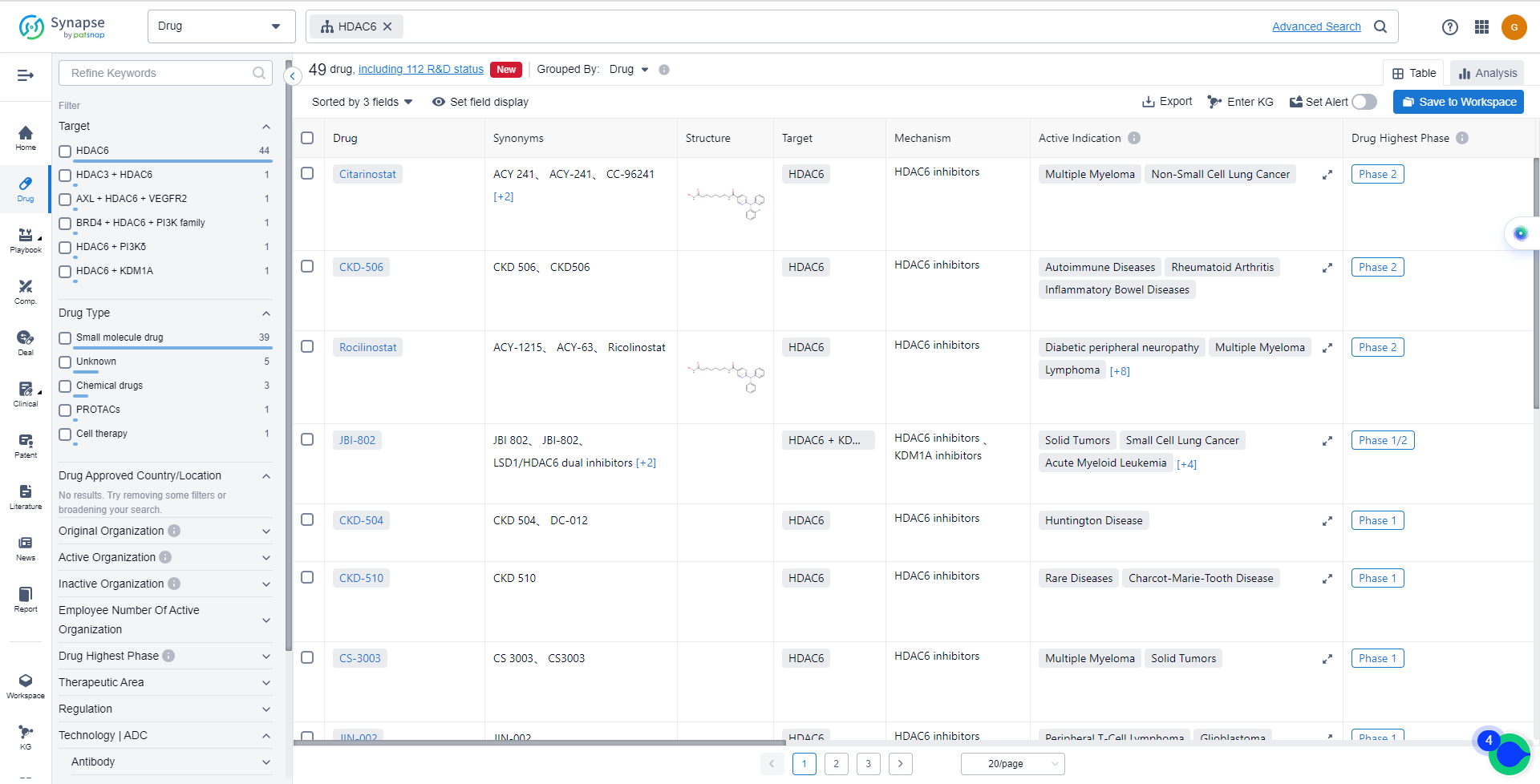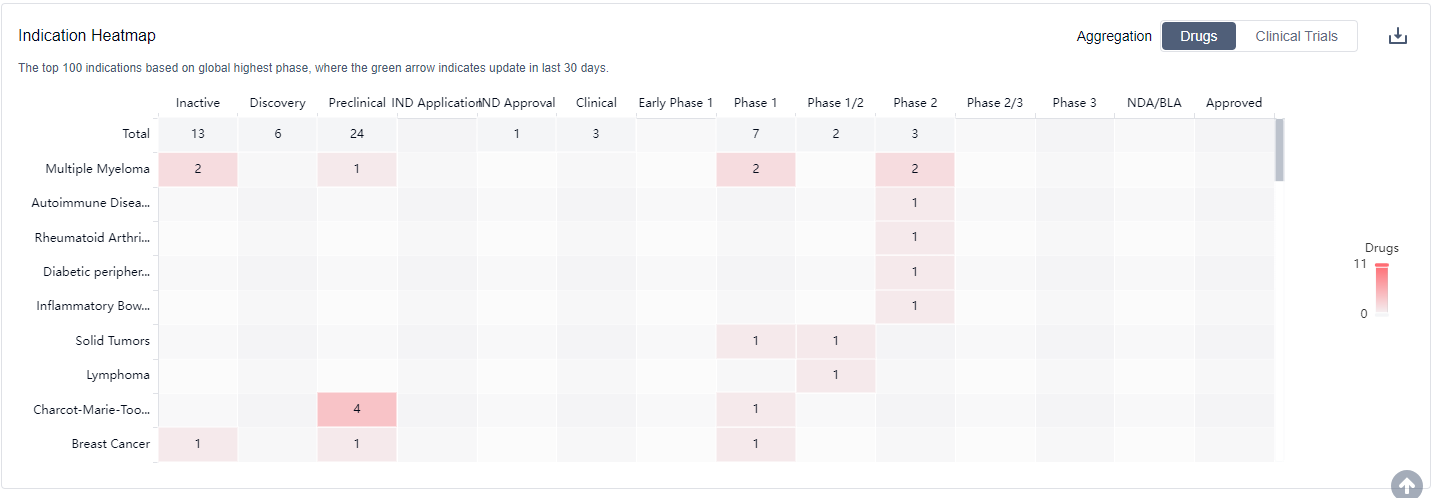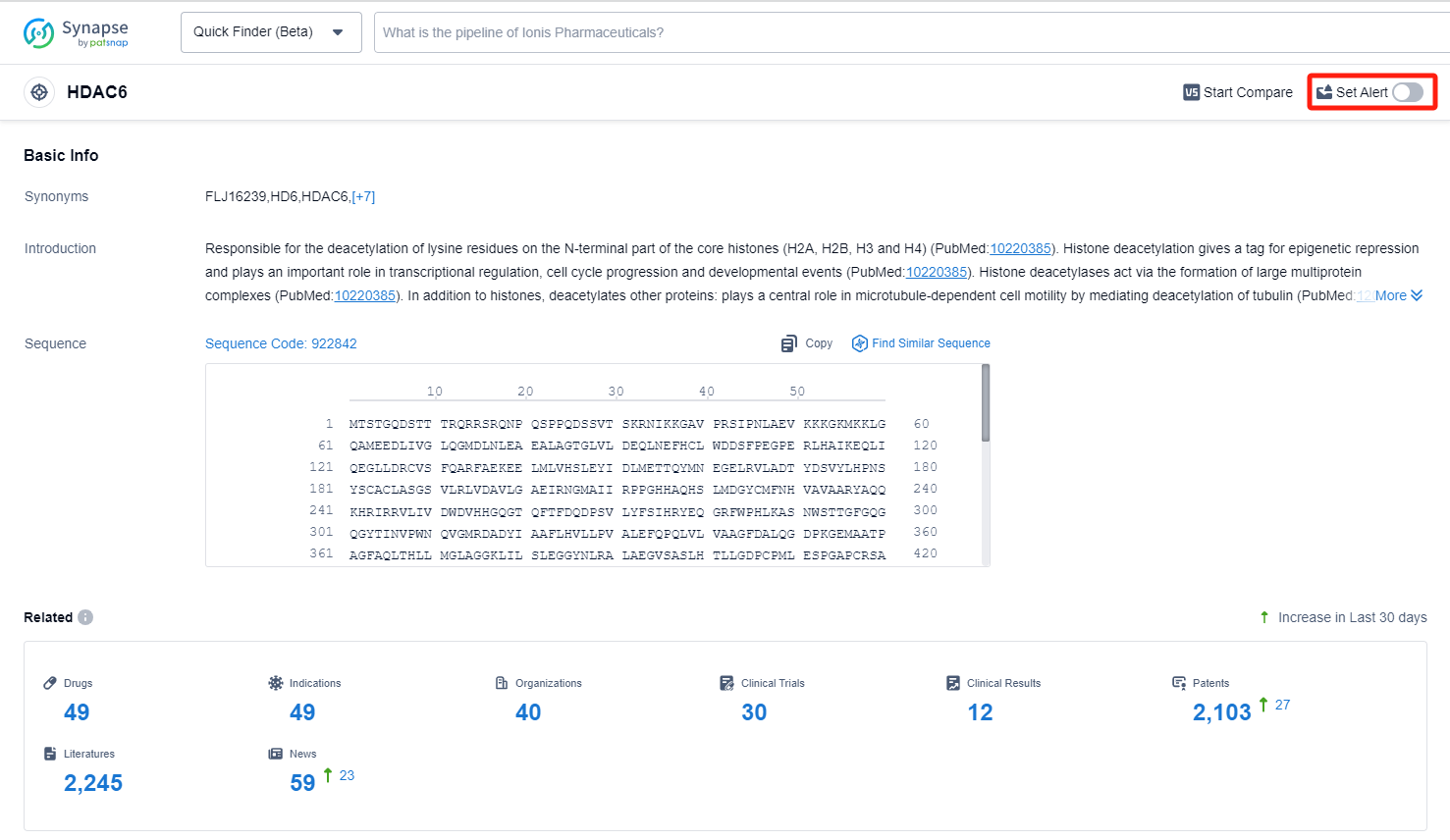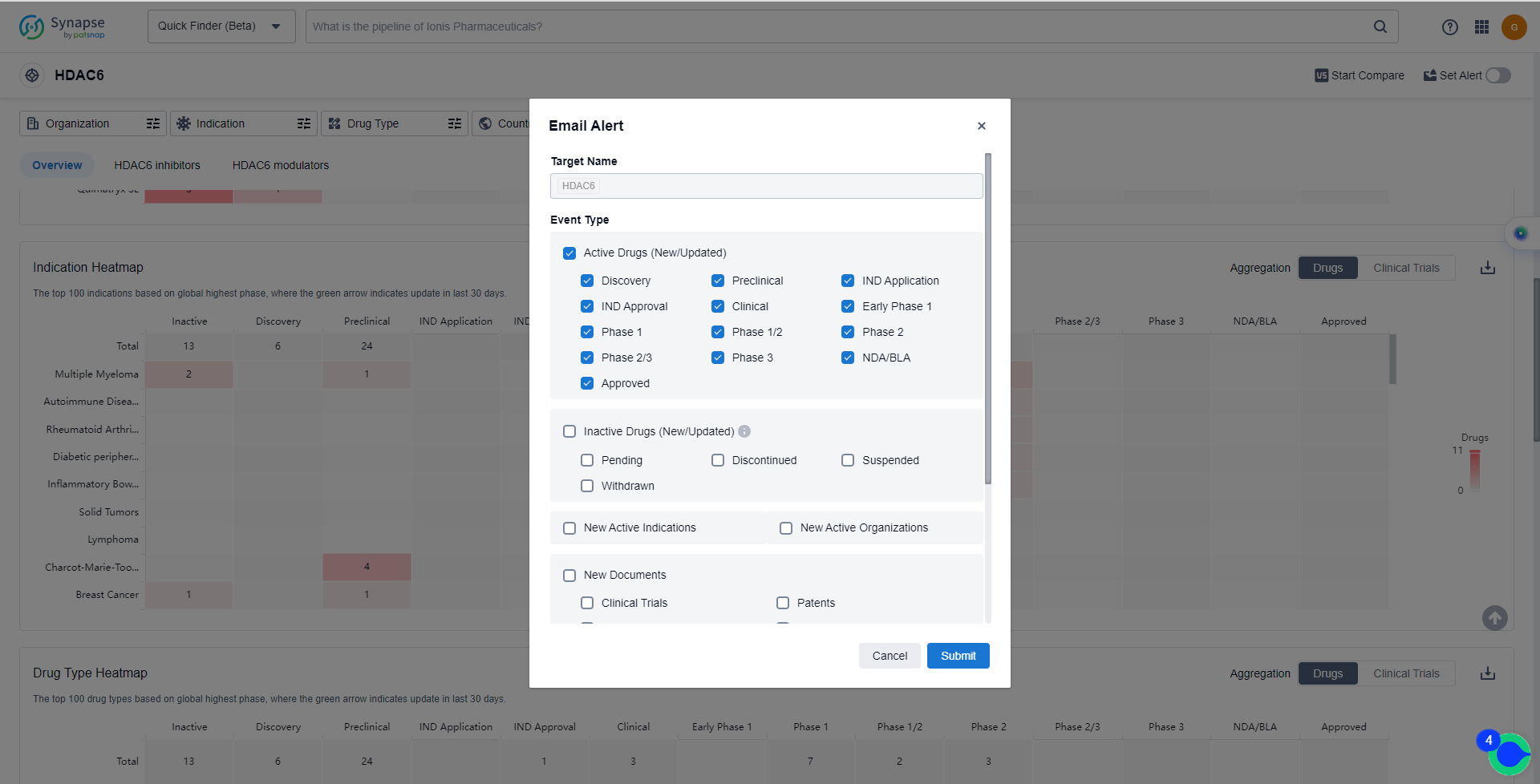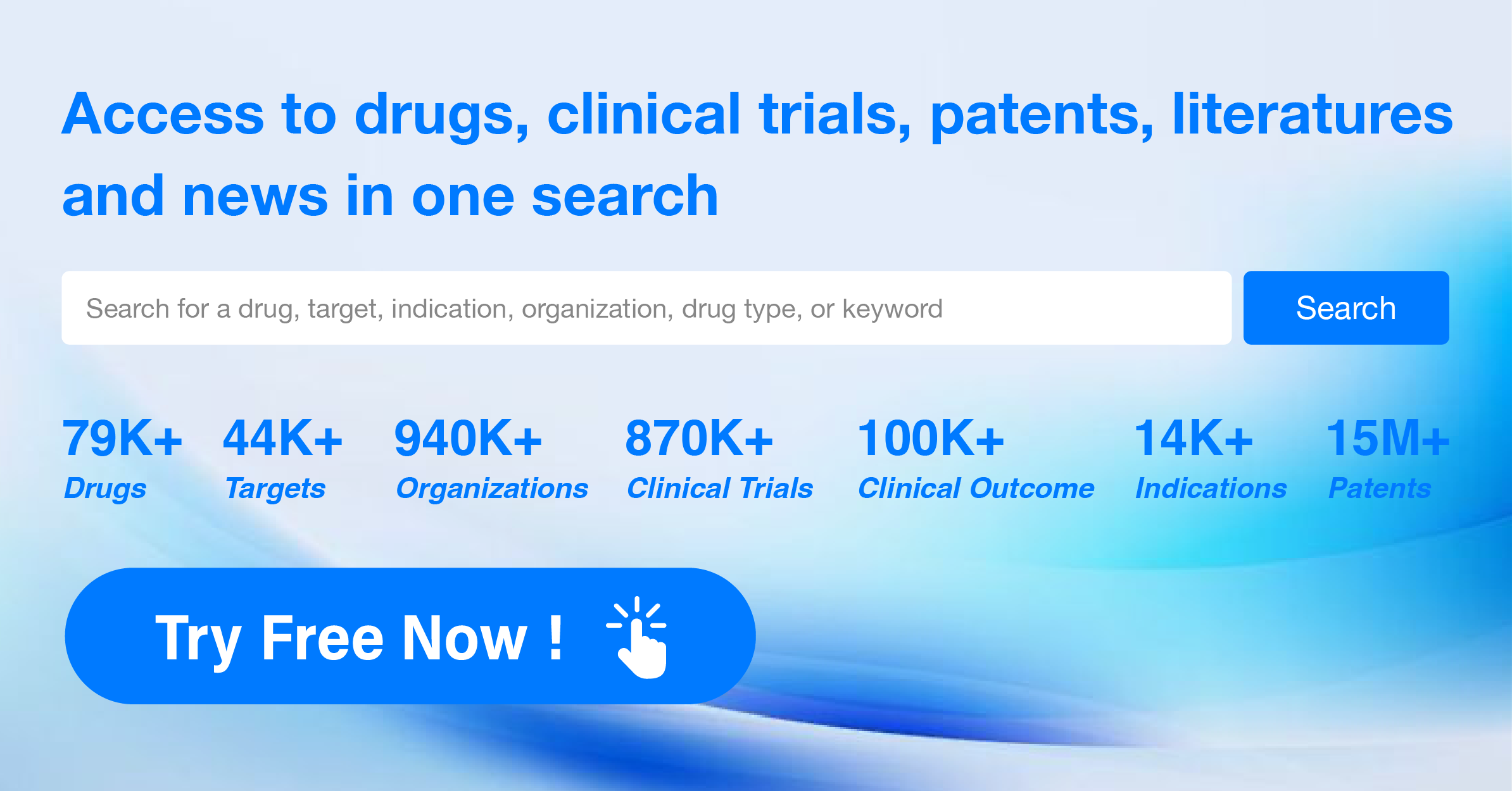What are HDAC6 inhibitors and how do you quickly get the latest development progress?
HDAC6, or histone deacetylase 6, is an enzyme that plays a crucial role in the regulation of gene expression and protein function in the human body. It is primarily involved in the removal of acetyl groups from proteins, thereby influencing their activity and stability. HDAC6 has been found to be particularly important in various cellular processes, including cell migration, protein degradation, and immune response. Dysregulation of HDAC6 has been associated with several diseases, including cancer, neurodegenerative disorders, and autoimmune conditions. Therefore, understanding the role of HDAC6 in the human body is essential for the development of targeted therapies and potential treatments for these diseases.
HDAC6 is the largest member of the HDAC family, consisting of 1215 amino acids. It is mainly composed of a nuclear export signal (NES), two functionally independent HDAC catalytic domains (CD1 and CD2, located at the N-terminus and the center, respectively), and a zinc finger ubiquitin-binding domain (at the C-terminus). The zinc finger ubiquitin-binding domain can be used to bind ubiquitin proteasomes to clear misfolded proteins. The nuclear export signal (NES) allows HDAC6 to be transported to the cytoplasm and target non-histone substrates in the cytoplasm, such as α-tubulin, tau protein, cortactin, heat shock protein (HSP90), and peroxidase. HDAC6 plays an important physiological role in cellular pathways, and its abnormal activity directly leads to various diseases, such as cancer, neurodegenerative diseases, immune disorders, etc. The latest research shows that HDAC6 is a potential target for a variety of rare diseases, such as Rett syndrome (RTT), inherited retinal diseases (IRDS), idiopathic pulmonary fibrosis (IPF), and Charcot-Marie-Tooth disease (CMT), etc. The classic HDAC inhibitor structure is mainly divided into three parts: ① the cap group that recognizes the protein surface and blocks other substrates from entering the active pocket, ② the linker, and ③ the functional group (Zn-binding Group, ZBG) that binds to the active center Zn2+. The affinity and selectivity of HDAC inhibitors with different HDAC subtypes are mainly determined by the interaction mode between these three parts and the catalytic site, so the activity and selectivity can be optimized by adjusting these three parts.
The analysis of target HDAC6 in the pharmaceutical industry reveals a competitive landscape with multiple companies actively involved in R&D. Bristol Myers Squibb Co., Chong Kun Dang Pharmaceutical Corp., and Regenacy Pharmaceuticals LLC are among the companies growing fastest under this target. The indications for drugs targeting HDAC6 cover a wide range of therapeutic areas. Small molecule drugs and unknown drug types are progressing rapidly, indicating intense competition in the development of innovative drugs. The European Union, the United States, South Korea, and Canada are the countries/locations developing fastest under this target, with China also showing progress. Overall, the future development of target HDAC6 holds promise in addressing various diseases and improving patient outcomes.
The mechanism of action of HDAC6 inhibitors
From a biomedical perspective, HDAC6 inhibitors refer to a class of drugs that specifically target and inhibit the activity of the enzyme called histone deacetylase 6 (HDAC6). HDAC6 is a member of the histone deacetylase family, which plays a crucial role in regulating gene expression and protein function by removing acetyl groups from histone proteins and non-histone proteins.
By inhibiting HDAC6, these inhibitors can modulate the acetylation status of proteins, leading to various cellular effects. HDAC6 inhibitors have shown potential therapeutic benefits in the field of biomedicine, particularly in the treatment of cancer and neurodegenerative diseases. They have been found to promote cell cycle arrest, induce cell death, inhibit angiogenesis, and enhance immune responses.
In cancer treatment, HDAC6 inhibitors can interfere with the growth and survival of cancer cells by altering the acetylation status of proteins involved in cell proliferation, apoptosis, and DNA repair. Additionally, they can sensitize cancer cells to other anti-cancer therapies, such as chemotherapy and radiation therapy.
In the context of neurodegenerative diseases, HDAC6 inhibitors have demonstrated neuroprotective effects and the ability to enhance the clearance of toxic protein aggregates, such as tau and alpha-synuclein, which are implicated in diseases like Alzheimer's and Parkinson's. This makes HDAC6 inhibitors a potential therapeutic strategy for slowing down disease progression and preserving neuronal function.
Overall, HDAC6 inhibitors are a promising class of drugs with diverse biomedical applications, and ongoing research aims to further explore their therapeutic potential in various disease conditions.
Catalog of HDAC6 Inhibitors
The currently marketed HDAC6 inhibitors include:
For more information, please click on the image below.
What is the purpose of using HDAC6 inhibitors?
Inhibitors of HDAC6 have demonstrated potential advantages in biomedical applications, notably in addressing malignancies and disorders related to neurodegeneration. For more information, please click on the image below to log in and search.
How can I get the most recent advancements in HDAC6 inhibitors?
In the Synapse database, you can keep abreast of the latest research and development advances of HDAC6 inhibitors anywhere and anytime, daily or weekly, through the "Set Alert" function. Click on the image below to embark on a brand new journey of drug discovery!
